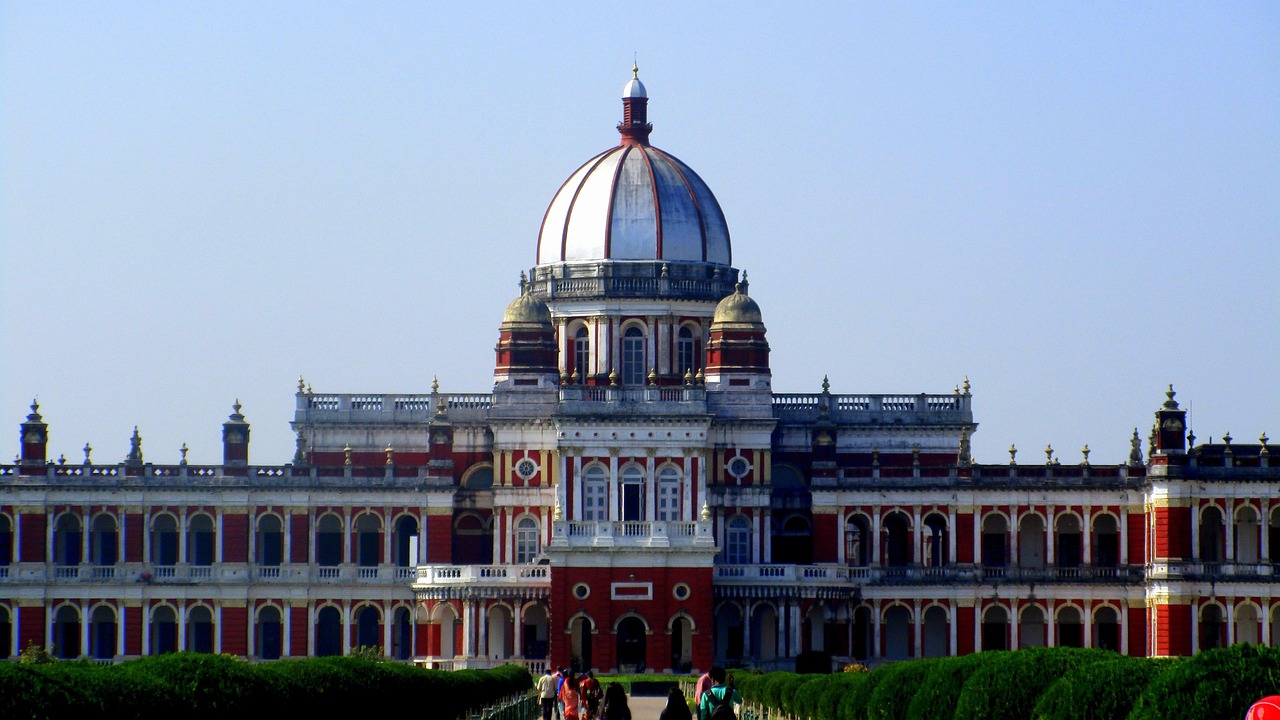This article delves into the evolving landscape of tourism in West Bengal in the aftermath of the pandemic. It analyzes emerging trends, challenges, and opportunities that are likely to influence the industry in the coming years.
Current State of Tourism in West Bengal
The tourism sector in West Bengal has shown resilience despite the setbacks caused by the pandemic. With a rich cultural heritage, stunning landscapes, and historical landmarks, the state has always been a preferred destination. As visitor numbers gradually increase, the sector is expected to rebound, with key attractions like the Sundarbans, Darjeeling, and Kolkata leading the way.
Impact of COVID-19 on Tourism
The pandemic has significantly altered the tourism ecosystem in West Bengal. Tourist inflow plummeted, affecting local businesses and livelihoods. Many hotels and restaurants faced closures, while the overall economic impact has been profound. However, as restrictions ease, there is optimism for recovery, albeit with a focus on safety and sustainability.
Changes in Tourist Behavior
- Increased preference for local experiences
- Heightened safety and hygiene concerns
- Growth of sustainable tourism practices
Domestic vs. International Tourism
With international travel still limited, domestic tourism has surged. This shift presents both challenges and opportunities for West Bengal, as local economies adapt to cater to a growing number of domestic travelers.
Emerging Travel Trends
Post-pandemic, travel trends are evolving. Wellness tourism, adventure tourism, and eco-tourism are gaining traction, reflecting a broader shift in traveler preferences towards meaningful and sustainable experiences.
Government Initiatives and Support
The government has introduced several measures to revitalize tourism, including financial aid for struggling businesses, promotional campaigns to attract visitors, and infrastructure development to enhance the overall visitor experience.
Challenges Facing the Tourism Sector
Despite the positive outlook, challenges remain. Health regulations, infrastructure deficits, and competition from neighboring states pose significant hurdles for the tourism industry in West Bengal.
Health and Safety Protocols
Implementing robust health and safety measures is crucial for rebuilding traveler confidence. This includes regular sanitization, social distancing protocols, and transparent communication regarding safety practices.
Environmental Sustainability Issues
Balancing tourism growth with environmental conservation is vital. Sustainable tourism practices must be prioritized to protect West Bengal’s natural beauty and cultural heritage.
Opportunities for Growth
There are numerous growth opportunities within the tourism sector. Niche markets, technological advancements, and collaborative efforts can significantly enhance the tourism experience in West Bengal.
Leveraging Technology in Tourism
Technology plays a crucial role in modern tourism. Virtual tours, online booking systems, and digital marketing strategies can improve accessibility and attract a broader audience to West Bengal’s attractions.
Promoting Cultural Heritage
West Bengal’s rich cultural heritage is a powerful asset. By promoting local festivals, traditional cuisine, and historical sites, the state can attract more tourists and enhance their experience.
Future Predictions for West Bengal Tourism
Looking ahead, the future of tourism in West Bengal appears promising. With a focus on sustainable practices, technological integration, and cultural promotion, the industry is poised for growth in the next five to ten years.

Current State of Tourism in West Bengal
The tourism sector in West Bengal has shown remarkable resilience and adaptability in recent years. As one of India’s most culturally rich and diverse states, West Bengal attracts millions of visitors annually, both from within the country and abroad. In 2022, the state welcomed approximately 10 million tourists, a significant rebound from the lows experienced during the pandemic. This influx has contributed substantially to the local economy, generating income for various sectors such as hospitality, transportation, and local crafts.
West Bengal’s tourism landscape is defined by its key attractions, which range from the majestic Darjeeling hills to the serene Sundarbans mangroves. The state’s rich cultural heritage is showcased through its numerous festivals, historical sites, and culinary delights. Popular destinations include:
- Kolkata – The cultural capital, known for its colonial architecture and vibrant arts scene.
- Darjeeling – Famous for its tea plantations and panoramic views of the Himalayas.
- Sundarbans – A UNESCO World Heritage site, home to the Royal Bengal Tiger and unique mangrove ecosystems.
- Shantiniketan – A hub of education and art, founded by Rabindranath Tagore.
The economic impact of tourism in West Bengal is significant, contributing around 7% to the state’s GDP. This sector not only supports jobs for millions but also fosters cultural exchange and community development. As the state continues to recover from the pandemic, there are opportunities to enhance the tourism experience through improved infrastructure, sustainable practices, and targeted marketing strategies.
In conclusion, the current state of tourism in West Bengal is one of cautious optimism. With its rich cultural heritage, stunning landscapes, and a growing number of visitors, the future looks promising for this vibrant sector. Continued investment and innovation will be key to maintaining this momentum and ensuring that West Bengal remains a top destination for travelers.

Impact of COVID-19 on Tourism
The Impact of COVID-19 on Tourism
The COVID-19 pandemic has profoundly transformed the tourism landscape in West Bengal, creating ripples that will be felt for years to come. As travel restrictions were imposed, the inflow of tourists plummeted, leading to immediate repercussions for local businesses reliant on tourism. This article delves into the multifaceted effects of the pandemic on the tourism ecosystem of West Bengal, examining both the short-term disruptions and the long-term ramifications.
Initially, the tourism sector faced a staggering decline in visitor numbers. According to recent statistics, tourist arrivals dropped by over 70% in the peak months of the pandemic. This decline not only affected hotels and travel agencies but also had a cascading effect on local artisans, restaurants, and transport services, which saw a significant reduction in revenue. Many small businesses struggled to survive, leading to job losses and economic instability in tourist-dependent areas.
In the long term, the pandemic has prompted a reevaluation of tourism strategies. Businesses are increasingly focusing on sustainable practices and local experiences, catering to a growing trend among travelers who prioritize safety and environmental responsibility. Moreover, the shift towards domestic tourism has gained momentum, as residents explore their own state, leading to a potential resurgence in local tourism.
Furthermore, the pandemic has accelerated the adoption of technology within the tourism sector. Many businesses have embraced digital platforms for bookings, virtual tours, and online marketing, enhancing their reach and accessibility. This technological shift is expected to redefine how tourism operates in West Bengal, making it more resilient to future disruptions.
In conclusion, while the immediate effects of COVID-19 on tourism in West Bengal have been devastating, the crisis has also opened opportunities for transformation and growth. The focus on sustainability, local experiences, and technological integration may well shape a more robust tourism ecosystem in the years to come.
Changes in Tourist Behavior
The landscape of tourism has undergone significant transformations in recent years, particularly in the wake of the pandemic. As travelers begin to venture out once again, their preferences and priorities have shifted dramatically. This section delves into the evolving behavior of tourists, highlighting key trends that are shaping the future of travel.
- Increased Interest in Local Experiences: Travelers are now more inclined to seek authentic, local experiences that allow them to immerse themselves in the culture and lifestyle of their destination. This shift has led to a growing demand for community-based tourism, where visitors engage with local artisans, participate in traditional cooking classes, and explore off-the-beaten-path attractions.
- Safety Concerns: The pandemic has heightened awareness around health and safety protocols. Tourists are prioritizing destinations that demonstrate a commitment to cleanliness and safety measures. This includes the implementation of contactless services, social distancing practices, and transparent communication regarding health guidelines.
- Rise of Sustainable Tourism Practices: There is a notable increase in traveler interest towards sustainability. Tourists are now more conscious of their environmental impact and are opting for eco-friendly accommodations, responsible wildlife tourism, and activities that support conservation efforts. This trend is prompting the tourism industry to adopt greener practices and promote sustainability as a core value.
As we look to the future, these changes in tourist behavior present both challenges and opportunities for the tourism sector. Destinations that adapt to these evolving preferences will likely thrive, while those that remain stagnant may struggle to attract visitors. Understanding and embracing these shifts is crucial for the sustainable growth of tourism in West Bengal and beyond.
Domestic vs. International Tourism
In recent years, particularly following the global pandemic, there has been a significant shift in the tourism landscape. Domestic tourism has experienced a remarkable surge, while international travel continues to face challenges. This section delves into the comparative analysis of these trends, exploring their implications for local economies and tourism strategies.
The pandemic has led to a re-evaluation of travel preferences. Many travelers have opted for local destinations, seeking the comfort of familiar surroundings and the ability to support local businesses. This shift has resulted in a notable increase in domestic tourism, with more people exploring their own regions and states. According to recent statistics, domestic tourist numbers have increased by over 30% in various regions, including West Bengal, where local attractions have seen a resurgence in visitors.
On the other hand, international tourism remains limited due to ongoing travel restrictions, safety concerns, and varying vaccination rates across countries. As a result, many international travelers are postponing their trips, leading to a decrease in foreign tourist arrivals. This decline has profound implications for economies that heavily depend on international tourism, including job losses and reduced revenue for local businesses.
Local economies are benefiting from the surge in domestic tourism, as it fosters job creation and stimulates spending in various sectors, including hospitality, transportation, and local attractions. However, to fully capitalize on this trend, tourism strategies must adapt. Stakeholders need to focus on enhancing the visitor experience by promoting local culture, heritage, and sustainable practices.
In conclusion, while domestic tourism is thriving, the slow recovery of international travel poses challenges. By embracing the opportunities presented by domestic travelers, regions can develop robust tourism strategies that not only support local economies but also prepare for the eventual resurgence of international tourism.
Emerging Travel Trends
The landscape of tourism is evolving rapidly, especially in the wake of the pandemic. Travelers are increasingly seeking experiences that align with their values and desires for personal growth. This section delves into three key trends that have emerged: wellness tourism, adventure tourism, and eco-tourism.
- Wellness Tourism: This trend emphasizes mental and physical well-being. Post-pandemic, many travelers are prioritizing their health, seeking retreats that offer yoga, meditation, and holistic healing. Destinations that provide spa services, healthy dining options, and nature-based activities are becoming increasingly popular.
- Adventure Tourism: As restrictions ease, many travelers are eager to explore the great outdoors. Adventure tourism encompasses activities such as hiking, rock climbing, and water sports. Destinations that offer unique experiences, such as zip-lining through rainforests or trekking in remote areas, are seeing a surge in interest.
- Eco-Tourism: With a growing awareness of environmental issues, eco-tourism is gaining traction. Travelers are looking for sustainable options that minimize their carbon footprint. This includes visiting national parks, participating in conservation efforts, and supporting local communities through responsible tourism practices.
As these trends continue to shape the future of travel, destinations that adapt to these preferences will thrive. By offering tailored experiences that cater to wellness, adventure, and sustainability, the tourism industry can not only recover but also innovate and grow in exciting new directions.
In conclusion, the post-pandemic era presents a unique opportunity for the tourism sector to embrace these emerging trends. By focusing on wellness, adventure, and eco-friendly practices, destinations can attract a new wave of travelers eager for meaningful experiences.
Government Initiatives and Support
In the wake of the pandemic, the government has recognized the crucial role of tourism in driving economic recovery and has implemented a series of robust measures aimed at revitalizing this vital sector. These initiatives encompass financial aid, promotional campaigns, and infrastructure development, all designed to enhance the overall visitor experience.
| Initiative | Description |
|---|---|
| Financial Aid | The government has rolled out various financial support programs for businesses in the tourism sector, including grants, low-interest loans, and tax relief to help sustain operations and retain employees. |
| Promotional Campaigns | To attract tourists, the government has launched extensive marketing campaigns highlighting the unique attractions of West Bengal, including its rich culture, heritage, and natural beauty. |
| Infrastructure Development | Investment in infrastructure such as roads, transportation systems, and hospitality facilities has been prioritized to improve accessibility and enhance the overall visitor experience. |
Additionally, the government is focusing on digital transformation within the tourism sector. This includes the implementation of online booking systems and virtual tour options that cater to the evolving preferences of travelers. Such measures not only make planning easier for tourists but also help local businesses reach a wider audience.
Moreover, partnerships with local communities and stakeholders are being fostered to promote sustainable tourism practices. This collaborative approach ensures that the benefits of tourism are shared broadly while also preserving the unique cultural and environmental assets of West Bengal.
In conclusion, the government’s proactive measures are paving the way for a resilient tourism sector in West Bengal. By focusing on financial support, effective marketing, and infrastructure improvements, the initiatives aim to restore confidence among travelers and revitalize the industry in a post-pandemic world.

Challenges Facing the Tourism Sector
The tourism industry in West Bengal is at a critical juncture, grappling with a multitude of challenges that hinder its recovery and growth. Understanding these obstacles is essential for stakeholders aiming to revitalize this vital sector.
- Health Regulations: The ongoing impact of the COVID-19 pandemic has necessitated stringent health regulations. These protocols, while crucial for ensuring visitor safety, can create barriers for both tourists and local businesses. Compliance with ever-evolving guidelines can be a daunting task, leading to increased operational costs and potential loss of customers who may feel hesitant to travel.
- Infrastructure Deficits: West Bengal’s tourism infrastructure, including transportation, accommodation, and amenities, requires significant improvement. Many regions lack the necessary facilities to accommodate an influx of tourists. For instance, inadequate road connectivity and limited public transport options can deter visitors from exploring the state’s diverse attractions.
- Competition from Other Regions: West Bengal faces stiff competition from other Indian states and international destinations that offer similar attractions. States like Kerala and Rajasthan have well-established tourism campaigns and infrastructure, making it imperative for West Bengal to innovate and enhance its offerings to attract more visitors.
Addressing these challenges is critical for the future of West Bengal’s tourism sector. Stakeholders must collaborate to develop strategic initiatives that not only comply with health regulations but also invest in infrastructure improvements and create unique experiences that set West Bengal apart from its competitors.
In conclusion, while the obstacles are significant, they also present opportunities for growth and development. By focusing on these areas, West Bengal can work towards reclaiming its position as a premier tourist destination in India.
Health and Safety Protocols
As the tourism sector in West Bengal gradually recovers from the impacts of the pandemic, health and safety measures have become paramount in restoring traveler confidence. These protocols not only ensure the safety of visitors but also play a significant role in revitalizing the local economy.
To create a safe tourism environment, the following measures are being implemented:
- Regular Sanitization: All tourist attractions, hotels, and transport services are undergoing frequent cleaning and disinfection to minimize the risk of virus transmission.
- Mandatory Masks: Visitors and staff are required to wear masks in public areas, ensuring an additional layer of protection.
- Social Distancing: Guidelines are in place to maintain appropriate distances in queues, dining areas, and other crowded spaces.
- Health Screenings: Temperature checks and health screenings are conducted at entry points of major tourist sites to identify potential health risks.
- Vaccination Drives: Encouraging vaccination among tourism workers and promoting the importance of vaccines to travelers is a key focus.
The implementation of these protocols is crucial for rebuilding trust among tourists. A recent survey indicated that over 70% of travelers prioritize health safety when planning trips, highlighting the need for robust measures.
Moreover, the government is actively promoting these health protocols through various channels, ensuring that potential visitors are well-informed about the safety measures in place. This not only enhances the tourist experience but also positions West Bengal as a responsible and safe destination.
In conclusion, the ongoing commitment to health and safety will be instrumental in shaping the future of tourism in West Bengal. By prioritizing these measures, the region can effectively attract visitors, ensuring a safe and enjoyable experience for all.
Environmental Sustainability Issues
In the vibrant state of West Bengal, the tourism sector plays a crucial role in the economy, yet it also poses significant challenges to environmental sustainability. As tourism continues to grow, it is essential to adopt practices that not only promote economic development but also protect the region’s rich biodiversity and cultural heritage.
The importance of sustainable tourism practices cannot be overstated. Sustainable tourism aims to minimize the negative impacts of tourism on the environment while maximizing the benefits to local communities. This approach is vital in West Bengal, where natural resources and cultural sites are under increasing pressure from tourist activities.
One of the primary challenges is the balancing act between tourism growth and environmental conservation. Popular tourist destinations, such as the Sundarbans and Darjeeling, attract millions of visitors each year. While this influx can boost local economies, it can also lead to overcrowding, pollution, and habitat destruction. For instance, the delicate ecosystem of the Sundarbans is threatened by waste generated by tourists and the expansion of infrastructure to accommodate them.
Moreover, climate change poses an additional challenge, impacting the natural landscapes that attract tourists. Rising sea levels and shifting weather patterns threaten coastal areas and agricultural practices, which are vital for sustaining local communities. Therefore, it is crucial for stakeholders to implement strategies that address these environmental concerns while promoting tourism.
To combat these issues, West Bengal can adopt several sustainable practices:
- Encouraging eco-friendly accommodations that utilize renewable energy sources.
- Implementing strict regulations on waste management in tourist hotspots.
- Promoting responsible tourism that educates visitors about local ecosystems and cultural practices.
- Investing in conservation efforts to protect endangered species and habitats.
In conclusion, while tourism presents significant opportunities for economic growth in West Bengal, it is imperative to prioritize environmental sustainability. By adopting responsible practices and engaging local communities, the state can ensure that its natural and cultural treasures are preserved for future generations.

Opportunities for Growth
The tourism sector in West Bengal is on the verge of transformation, presenting numerous in the post-pandemic landscape. As the world gradually recovers, West Bengal can focus on several key areas to enhance its tourism experience.
- Niche Markets: There is a growing demand for specialized tourism experiences. By tapping into niche markets such as wellness tourism, eco-tourism, and culinary tourism, West Bengal can attract a diverse range of visitors. Promoting local wellness retreats, sustainable travel options, and unique food experiences can cater to these emerging interests.
- Technological Advancements: The integration of technology in tourism can significantly enhance visitor engagement. Implementing virtual tours, mobile apps for easy navigation, and online booking systems can improve accessibility. Additionally, leveraging social media platforms for marketing can help reach a broader audience and create a buzz around West Bengal’s attractions.
- Collaborations and Partnerships: Building partnerships with local businesses, travel agencies, and international tourism boards can create a more cohesive tourism strategy. Collaborations can lead to joint marketing efforts, shared resources, and enhanced visitor experiences. For instance, partnering with local artisans for cultural workshops can provide tourists with authentic experiences while supporting the local economy.
- Sustainable Practices: Emphasizing sustainability in tourism can attract eco-conscious travelers. Initiatives such as promoting green hotels, reducing plastic use, and encouraging responsible tourism practices can enhance West Bengal’s image as a sustainable destination.
In conclusion, by focusing on these growth areas, West Bengal can revitalize its tourism sector, ensuring a more resilient and dynamic future. The combination of niche markets, technological integration, strategic collaborations, and sustainable practices will not only enhance the tourism experience but also contribute to the economic upliftment of the region.
Leveraging Technology in Tourism
The tourism industry in West Bengal is on the brink of a transformative era, particularly in the wake of the pandemic. With the advent of technology, attractions can now reach a broader audience, enhancing both accessibility and engagement. This section delves into how innovative solutions such as virtual tours and online booking systems are reshaping the tourism landscape in West Bengal.
Virtual Tours: A Gateway to Exploration
Virtual tours offer potential visitors a chance to explore West Bengal’s rich heritage and stunning landscapes from the comfort of their homes. This technology allows users to navigate through historical sites, natural parks, and cultural landmarks, providing a taste of what awaits them. By integrating 360-degree videos and interactive elements, these tours can significantly enhance the user experience, making it easier for travelers to decide on their next destination.
Online Booking Systems: Streamlining Travel
In addition to virtual tours, online booking systems have revolutionized how travelers plan their trips. These platforms enable users to book accommodations, tours, and activities with just a few clicks, removing traditional barriers associated with travel planning. This convenience not only attracts more visitors but also encourages them to explore lesser-known attractions, thereby distributing tourism revenue more evenly across the region.
Enhancing Accessibility
Technology also plays a crucial role in improving accessibility for individuals with disabilities. Features such as screen readers for virtual tours and detailed accessibility information on booking platforms ensure that everyone can enjoy the beauty of West Bengal. By catering to a diverse audience, the tourism sector can foster inclusivity and broaden its appeal.
Conclusion
As West Bengal moves forward, harnessing the power of technology will be essential in revitalizing its tourism sector. By offering virtual experiences and simplifying the booking process, the state can attract a wider audience, ensuring a vibrant future for its tourism industry.
Promoting Cultural Heritage
West Bengal is a vibrant state in India, renowned for its rich cultural heritage that encompasses a plethora of traditions, festivals, and culinary delights. To attract tourists, it is essential for the state to effectively capitalize on these unique aspects. This article delves into how West Bengal can enhance its tourism by focusing on its festivals, local cuisine, and historical sites.
Festivals: A Vibrant Showcase of Culture
West Bengal is famous for its colorful festivals, which serve as a magnet for tourists. The Durga Puja, celebrated with great fervor, transforms the state into a vibrant canvas of art, music, and devotion. Tourists flock to witness the elaborate pandals and participate in the festivities. Other notable festivals include Poila Boishakh (Bengali New Year) and Viswakarma Puja, each offering a unique glimpse into the local culture and traditions.
Local Cuisine: A Culinary Journey
The culinary landscape of West Bengal is another significant draw for tourists. The state’s cuisine, characterized by its use of spices, fish, and rice, offers a delightful experience. Signature dishes like Machher Jhol (fish curry), Shorshe Ilish (hilsa fish in mustard sauce), and Mishti Doi (sweet yogurt) not only tantalize the taste buds but also tell the story of the region’s agricultural practices and cultural influences. Culinary festivals can be organized to showcase these delicacies, attracting food enthusiasts from all over.
Historical Sites: A Journey Through Time
The historical sites in West Bengal, such as Kalighat Temple, Howrah Bridge, and the Victoria Memorial, provide a glimpse into the state’s rich past. These landmarks not only reflect architectural brilliance but also serve as important cultural symbols. Promoting guided tours and educational programs around these sites can enhance tourists’ appreciation of West Bengal’s history.
Conclusion
By focusing on its vibrant festivals, delectable cuisine, and historical landmarks, West Bengal can significantly enhance its appeal to tourists. Emphasizing these cultural elements will not only attract visitors but also promote a deeper understanding and appreciation of the state’s heritage, ensuring a sustainable tourism model for the future.

Future Predictions for West Bengal Tourism
As we look ahead to the next five to ten years, the tourism landscape in West Bengal is poised for significant transformation. The impacts of the pandemic have reshaped travel preferences, and as recovery takes root, several trends are likely to define the sector’s future.
- Sustainable Tourism Growth: The shift towards sustainability is expected to accelerate. Tourists are increasingly seeking eco-friendly options, and West Bengal’s diverse ecosystems offer a unique opportunity to promote eco-tourism and conservation efforts.
- Digital Transformation: The integration of technology in tourism will become paramount. Enhanced online booking systems, virtual reality experiences, and mobile applications will streamline travel planning and enhance visitor engagement.
- Cultural Heritage Promotion: West Bengal’s rich cultural tapestry will be a focal point for attracting tourists. Festivals, local cuisine, and historical landmarks will be emphasized to create immersive experiences that resonate with visitors.
- Adventure and Wellness Tourism: There is a growing interest in wellness and adventure tourism. Regions like the Himalayas and Sundarbans can harness this trend by offering wellness retreats and adventure activities, catering to health-conscious travelers.
Moreover, collaborations between the government and private sectors will be crucial in revitalizing the tourism industry. Initiatives that enhance infrastructure, promote local businesses, and improve safety protocols will build traveler confidence and ensure a robust recovery.
In summary, the future of tourism in West Bengal appears promising, with opportunities for growth and innovation. By embracing sustainable practices and leveraging technology, West Bengal can position itself as a premier travel destination in the coming years.
Frequently Asked Questions
- What is the current state of tourism in West Bengal?
The tourism sector in West Bengal is gradually recovering, with a noticeable increase in domestic travelers. Key attractions like the Sundarbans and Darjeeling are seeing more visitors, which is crucial for the local economy.
- How has COVID-19 affected tourism in West Bengal?
The pandemic significantly impacted tourist inflow, causing many local businesses to struggle. However, it has also led to a shift in tourist preferences towards safer, local experiences and sustainable practices.
- What are some emerging travel trends in West Bengal?
Post-pandemic, trends like wellness tourism, eco-tourism, and adventure tourism are gaining traction. Travelers are now more inclined to seek unique, authentic experiences that connect them with nature and local culture.
- What initiatives are being taken to support tourism in West Bengal?
The government is implementing various measures, including financial aid for businesses, promotional campaigns to attract visitors, and developing infrastructure to enhance the overall experience for tourists.
- What challenges does the tourism sector face in West Bengal?
Challenges include adhering to health regulations, improving infrastructure, and competing with other regions for tourist attention. Addressing these issues is crucial for sustainable growth in the industry.


























































